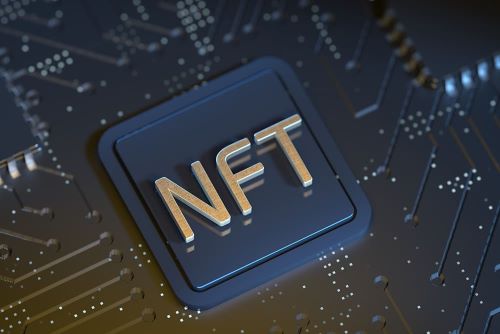Trademarks and NFTs.
Accelerated technological advancement has given way to revolutionary ways of marketing and protecting intangible assets, completely transforming the global trademark landscape, particularly with the emergence of NFTs (non-fungible tokens) and their growing popularity in sectors such as art, fashion, and entertainment. NFTs are based on blockchain technology, which helps guarantee the authenticity of a digital asset. However, it also poses new challenges in terms of protection and unauthorized use of brands in the decentralized digital environment.
NFTs have enabled commercial brands to expand their marketing and business strategies. By moving their brands into a digital industry, they can create a closer connection with their consumers. A notable example of this is the launch of digital fashion collections, where brands such as Gucci® and Louis Vuitton® have created NFTs that allow users to purchase virtual garments for avatars in augmented reality environments or video games. This type of interaction creates new ways to capitalize on brand intellectual property in fully digital environments.
In addition, NFTs allow brands to explore new business models that include direct sales and automatic royalties through smart contracts. This means that a brand could generate revenue not only from the initial sale of an NFT, but also from each subsequent resale of the token, with automatic royalties applied to each transaction. This ability to securely and transparently trace a digital asset is particularly attractive to brands looking to protect and monetize their intellectual property assets in the digital world.
I- Risks and challenges for trademarks in the NFT environment.
Despite the opportunities, NFTs present serious legal challenges for brands. One of the most common problems is the unauthorized use of trademarks in NFTs created by third parties without the permission of the trademark holders. Since blockchain is a decentralized technology, it is more difficult to monitor and regulate the creation of NFTs involving trademarks without proper authorization. This can result in the sale of digital products that infringe trademark rights, generating confusion among consumers and damaging brand value.
An example of this is the case of Hermès®, which sued a digital artist who created and sold NFTs under the name “MetaBirkin,†an unauthorized reference to the iconic Hermès® Birkin bag. The court ruled in favor of Hermès®, stating that the use of a registered trademark without permission in the context of NFTs may constitute trademark infringement. This case underscores the need for a clear legal strategy to protect trademarks in the digital environment and raises questions about jurisdiction and the applicability of traditional IP laws to these new technologies.
II- Trademark Protection in the Blockchain Environment.
To address these challenges, trademark owners must be proactive in protecting their IP rights in the NFTs and blockchain environment. A key first step is to register trademarks in categories related to digital goods and services, taking the Nice Classification as a basis, including:
-
- Class 9:Â Covers software and digital goods.
- Class 35:Â Covers marketing of goods in digital environments).
- Class 41:Â Covers entertainment services in digital environments).
- Class 42:Â Protects technology and software development, including the design and development of digital applications and platforms, such as blockchain systems where NFTs are created and traded.
By anticipating potential uses of their trademarks in the digital space, companies can better protect their interests and reduce the risk of infringement.
Another important step is to monitor NFT exchange platforms for potential infringement. This may involve implementing blockchain tracking technologies that can identify transactions involving digital assets that misuse a trademark. Although monitoring can be complex in a decentralized environment, the use of technological tools can provide an additional layer of protection.
III- Conclusion
NFTs represent a new frontier for brands, with significant potential to expand companies’ digital presence and create new revenue channels. However, they also present considerable risks in terms of trademark infringement and the need to adapt traditional legal strategies to the new environment. Brand owners must act proactively by registering their assets in relevant categories, monitoring NFTs sharing platforms, and establishing clear policies to manage the protection of their intellectual property in the virtual world. As technology continues to evolve, the IP legal framework will also need to adapt to address emerging challenges and provide effective solutions in this dynamic landscape.
Bibliography
-
- Kindred, M. (2023). NFTs and intellectual property rights: What we know and what is coming. University of Cincinnati Law Review.
- Hugenholtz, P. B., & Quintais, J. (2018). Blockchain and the future of copyright. International Journal of Law and Information Technology, 26(4), 311-336.
- Hermès International v. Rothschild, 590 U.S. (2023).
- Kim, S. (2021). “Non-Fungible Tokens (NFTs): A New Era for Digital Art and IP Protection.†Technology and Law Review, 32(4), 301-318.
- World Intellectual Property Organization (WIPO) (2022). “NFTs and IP: Navigating the Future of Digital Ownershipâ€. WIPO Magazine, Issue 2/2022.
Written by:




